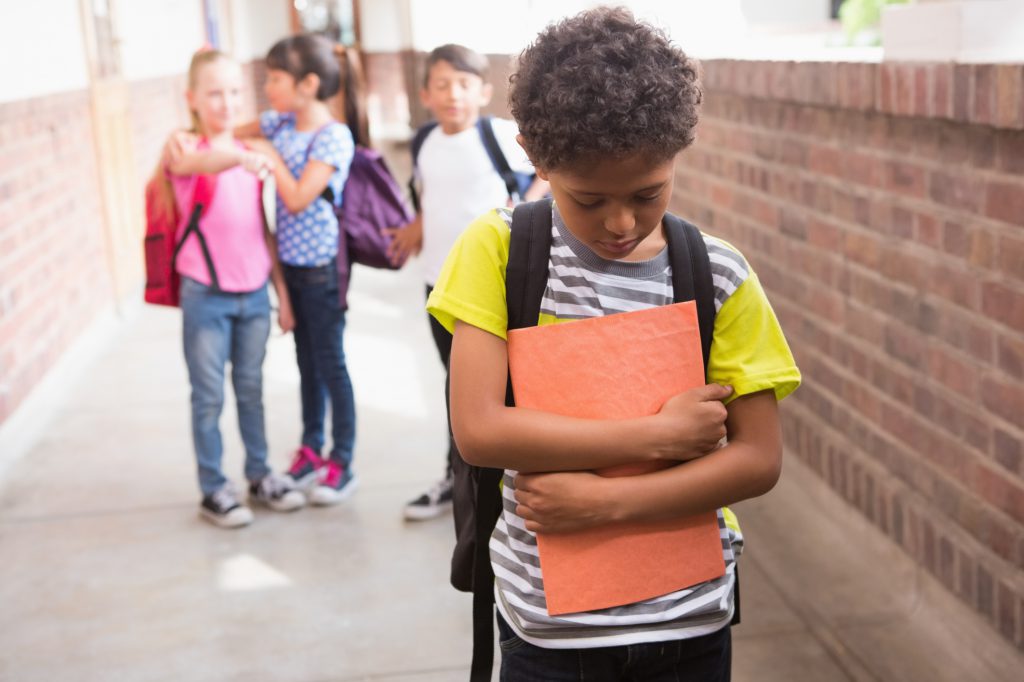
A new report from the National Academies of Sciences, Engineering and Medicine describes the effects of bullying on childhood development and calls for a better understanding of cyberbullying. Dr. Frederick Rivara, Seattle Children’s Guild Endowed Chair in Pediatrics, chaired the report committee, and Dr. Megan Moreno, principal investigator of the Social Media and Adolescent Health Research Team at Seattle Children’s Research Institute, was a committee member. On the Pulse sat down with them to discuss the new findings and what families can do to protect their children from bullying.
What new information or findings does this report offer about bullying? What are the key takeaways?
Moreno: While bullying has been around for decades, there are many misconceptions about bullying. This report describes and synthesizes the current scientific evidence so that we can have a shared understanding of the current state of the science on bullying.
The first takeaway is that bullying experiences can lead to biological changes for the target of bullying, including stress response and brain activity alterations.
A second key point is that bullying experiences are different based on a youth’s context. For example, a youth who experiences bullying in a supportive school environment will have a different experience and likely different consequences compared to a youth who has these experiences in a school that is permissive towards bullying. This point supports that it is not just the bullying event that matters, but the environment and support system surrounding that event.
A third point is that the report describes the best evidence of how to understand cyberbullying in the larger context of bullying. While cyberbullying presents some unique challenges, it shares many features with traditional methods of bullying and is best understood in that context.

How does bullying affect child development? Is it widespread?
Rivara: Traditional bullying is very common, affecting 18-31% of children and youth, while cyberbullying affects 7-15%. Bullying has both short and long-term consequences, including physical symptoms such as headaches and sleep problems, as well as anxiety, depression and substance abuse. It is also associated with increased risk of suicide and of school failure.
There’s a significant discussion about cyberbullying. How is it different than other bullying?
Moreno: Cyberbullying has more similarities than differences with traditional bullying. While the definition of bullying includes that it is a repeated or can be a repeated activity, one difference in cyberbullying is that hurtful messages can go viral and be repeated online hundreds of times.
The definition of bullying includes that it is aggressive, and with cyberbullying there can be situations in which a message was not meant to be aggressive or hurtful, but without cues like tone of voice or facial expression, it can be interpreted as hurtful and then repeated or spread.
Many cases of cyberbullying also involve traditional bullying. Thus, while there are some unique aspects to cyberbullying, the best way to prevent and intervene in cyberbullying is to consider approaches that are known to be effective for bullying.
What can policymakers take away from the report about how to manage bullying?
Rivara: There is a great deal of important information for policymakers in this report. Research has found that multi-component, school-wide programs are effective in decreasing bullying. However, zero-tolerance policies are not effective and have adverse effects, so the report recommends that they be discontinued. State laws around bullying have been passed in all states and have been shown to have a positive effect.

What should parents know about bullying, whether it’s their child being bullied or their child who’s doing the bullying?
Moreno: Parents should be aware that while bullying has been around since they themselves were young, it is now clear that these experiences are harmful and have both short-term and long-term consequences for perpetrators as well as targets.
Parents should take their child’s concerns or experiences with bullying seriously, whether as a target, perpetrator, bystander or witness. Parents should talk openly with their child about their bullying experiences, and seek additional support from pediatricians, school personnel or counselors if additional help would be beneficial.
What research or resources are needed for a better understanding of bullying?
Rivara: There needs to be much more attention on understanding the prevalence and effects of bullying among kids with disabilities or special needs, basically any child perceived as “different.” There is a need to use a uniform definition of bullying and monitor its prevalence. Researchers and policymakers also need to evaluate evidence-based programs to address stigma and bias-based bullying behavior.
Resources
- Report: Preventing Bullying Through Science, Policy, and Practice
- Dr. Frederick Rivara, Seattle Children’s

